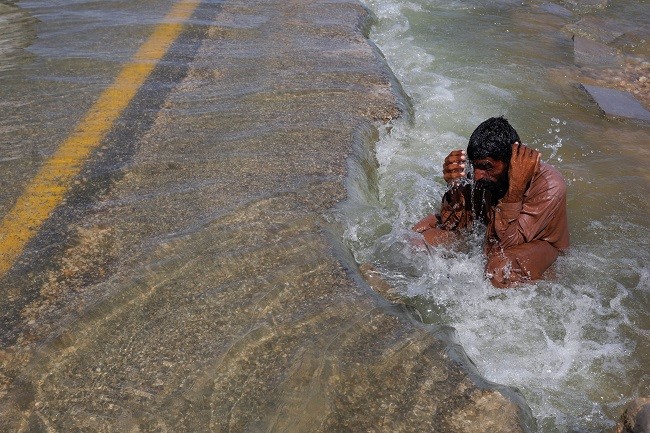
By the year 2100, extreme heat events will make parts of Asia and Africa uninhabitable for up to 600 million people, the United Nations and the Red Cross said Monday.
Projected death rates from heat waves are “staggeringly high,” comparable to all cancers or all infectious diseases, according to a report released ahead of next month’s U.N. Climate Change Conference in Egypt by the U.N. Office for the Coordination of Humanitarian Affairs and the International Federation of Red Cross and Red Crescent Societies.
The report adds to the growing number of studies that show climate change is exacerbating the magnitude and frequency of extreme weather events. Heat waves in the Western United States this year broke hundreds of records after days of triple-digit temperatures and weeks of dry weather.
The report’s findings “are startling and disturbing,” the authors wrote. Heat waves “will become deadlier with every further increment of climate change. We hope this report serves not only as a wake-up call but also a road map.”
In a stark scenario, which would result if “little is done to curb carbon emissions,” densely populated urban centers in South Asia, the Middle East and North Africa will suffer from “recurring life-threatening” heat events that bring temperatures beyond the human survivability threshold.
That would affect 600 million people in countries such as India, Indonesia, Sudan and Kuwait, according to the report. Many of those regions are already experiencing increasingly hot and frequent heat events.
This year, India and Pakistan suffered a scorching streak that began in March. It shortened the school calendar and cut crop yields as the mercury reached 117 degrees Fahrenheit. Last year, parts of the Middle East topped 125 degrees during a heat wave. Five years before, a Kuwaiti town logged 129 degrees.
By the end of this century, one-third of the global population could be living in areas with average temperatures above 84 degrees, which until now has been limited to 0.8 percent of the world’s land surface, mostly in Africa’s Sahara region, according to the report, which cited a 2019 study.
Extreme heat waves will also make parts of the United States, including Georgia, Alabama, Louisiana and California, less suitable for human habitation by 2070, the report said, if global temperatures rise between 2 and 2.5 degrees Celsius above preindustrial levels.
More frequent and more severe heat events will also kill more animals and destroy environments, exacerbating the fallout from such weather, according to the report. Food supplies will be disrupted, with extreme heat events potentially contributing to price volatility for staple crops like wheat.
The fallout will be unequal. The most vulnerable and marginalized people, such as agricultural workers, migrants, the elderly, children, and pregnant and breastfeeding women, are at higher health risk from heat events, according to the report.
Countries that are the least responsible for climate change will also bear more of the burden than richer nations that emit more greenhouse gases, the authors said. Pakistan, which has contributed less than 1 percent of global emissions for decades, suffered catastrophic floods this year that weather experts blamed on climate change.
“Let us be clear: This is not a problem that humanitarian organizations can solve alone. The urgent priority must be large and sustained investments that mitigate climate change and support long-term adaptation for the most vulnerable people,” the report said. “Without those investments, we are destined for a future of ever larger and deadlier heat disasters.”


